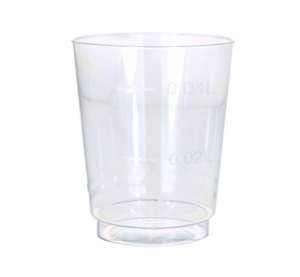
I imagine you must have been to a hospital before. Believe me, by my age, you have to be really very fortunate to have not had a hospital stay. I remember once I had a fall from my new motorbike and landed in a monsoon drain and inevitably that was the first time I ended up in the hospital. Well that was years ago. Since then I have given up on bikes and have even convinced my sons to just be contented with what they watch on TV – Extreme Sports. Machine on two wheels are really too unstable in a fast pace world we live in!

Today’s Untra-modern Admissions Office
Data Collection. The first thing that they do to you when you arrive at the hospital is, of course, the first step of problem solving – collect some data.
In this case, they collect your blood. The doctors does it, sometimes the experienced nurses does it. I am not sure who inflicts more pain, but I think younger nurses or doctors are slightly more gentle (be free to comment on this if you disagree!).
 Ouch! They always ask you, if it hurts (as if it doesn’t!)
Ouch! They always ask you, if it hurts (as if it doesn’t!)
Take One. Some years ago, a wonderful project was carried out by a group of nurses at a local hospital. The hospital was new then, located somewhere in the Eastern part of the island. This team of nurses noticed that, once in a while, the blood sample they ‘extract’ from the patient is simply no-good.
Meaning, when the sample reached the lab for assessment, it was graded ‘contaminated’. Now when this happens, the next course of action is that the nurse must take another sample. Most patients may not mind, but if the patient is difficult, especially those who frequent hospitals, and knows his/her rights, then making another extra prick into the vein will really upset them. If they do not accept the nurses explanation then a complaint is coming your way!
 Sorry Sir. We need to redo it. The last sample was no good.
Sorry Sir. We need to redo it. The last sample was no good.
(Was it me? How did I get bad blood??)
What is bad blood? More often than not the blood was not contaminated by what the patient eat, rather it was due to contamination in the environment. The place where blood is taken is generally not in a 100% sterile environment. You don’t get the privilege of an operating theatre to have your blood sample extracted.
 Blood sample are collected and sent to the laboratory
Blood sample are collected and sent to the laboratory
 They are then tested
They are then tested
by specially trained hospital laboratory technicians
The team of nurses got together to make a study on causes of blood contamination. By looking up some statistics and literature, the team realised that, compared to other reputable hospitals, their contamination rate was much higher.
Healthcare service standards. Curious and determined, they set a goal to reduce the blood contamination rate to the level of the best hospital standards. Being a new hospital, this would really be a worthwhile attempt to help it set a high standard of healthcare. Already healthcare had attracted much attention and even the Minister for Health had made his point in the papers. For instance, he had suggested that hospitals should be also be monitored for speed besides treatment success. Some of you may remembered this article in the newspaper.
 Hospitals need to be efficient!
Hospitals need to be efficient!
Fast and good – Not so cheap. Hospitals are busy places, doctors and nurses rushed up and down corridors to save lives – that is exactly what we would expect of hosipitals. There are some simple rules on priority treatment. Urgent cases like bleeding, heart attacks, poisoning, etc will be attended to first. Obviously taking a sample of blood is low on the urgency scale.
 Saving lives is highest on the agenda
Saving lives is highest on the agenda
Ouch! Ouch! Not again. All these pressures had stretched the existing resources. Nurses are busy, administrators are busy, doctors are busy, attendants are busy, etc. So sometimes, the antiseptic gauze or alcohol is not replenished and the nurses or doctors had to walk down the corridor to collect new supplies. As the seconds tick by, the bacteria did their thingi. The blood, when left in the syringe longer than normal, is slowly contaminated by the bacteria from the atmosphere. Too bad, the lab rejects the sample and another anoying prick had to be administered.
 Ouch! Ouch! OUCH!!
Ouch! Ouch! OUCH!!
The Package Deal. So with a good analysis of cause, and discussion, the team came up with the brilliant idea of preparing antiseptic packages for taking blood samples. The items required for taking blood are very standard items. Therefore, once they are all complete, the blood sample taking proceedure will proceed like clockwork, and unnecessary waiting time will be eliminated.

Results. The team tried it out, got the medical supply vendors to provide the packaging, and presto, blood contamination went down by more than 70%.
When you include the ‘wasted lab test’ and other administration, the time to redo the blood taking, attending to complaints of customers, bad publicity, this project does go a long way in terms of cost reduction! The total savings (antibiotics, material, administration) projected for that year came up to a cool S$38,000.
How about that kind of results from a team of five nurses working on it for six months, meeting only every other week for about 1.5 half hours each time. I would say it was a good package deal!

A really good package deal, I would say!







































































































